
The Reynolds valve trombones were built on the same design and specifications of regular slide trombones, and usually offered in a combination package with a standard slide. Models were offered throughout the company's history, largely based on the Professional and Contempora lines. Following the trend with trombones overall in the twentieth century, Reynolds valve trombone bore sizes gradually increased over the model line’s history, from .483″ (1953) to .500″ (1959) to .510″ (1970) to .515″ (1977).
Marching trombones were introduced in the 1970s, providing a new compact format for the tenor voice on the marching band field.
1936-c.1949
F.A. Reynolds (Cleveland, Ohio)
Many slide trombonists say that a valve trombone doesn't have a true trombone tone. But this one really has. It also has an important feature for the busy player doubling in slide and valve ... All you do to shift quickly from one to the other is attach either the slide or valve section to the bell. That's how easy it is.
c.1949-1952
F.A. Reynolds, division of Scherl & Roth (Cleveland, Ohio)
Circa 1949, Reynolds redesigned the bracing on the trombone line. The new braces bear more than a passing resemblance to those made by Olds (where founder Foster A. Reynolds was working after leaving Reynolds in 1946) rather than the previously modeled King trombones. Serial number 22000 (c.1949) marks the approximate change to the updated brace design. The F.A. Reynolds models were rebranded as the Reynolds “Professional”.
The Valve Trombone with the True Trombone Tone. In doubling in slide and valve, all you do to shift quickly is attach either section to the bell.
Model Note
Whereas the straight Professional tenor trombone advanced its design to include more nickel-silver (cf. gooseneck, tuning crook), the valve trombone initially retained original brass materials for these parts, making it identical to the new Emperor model. By the mid-1950s, however, the valve trombone was sold with the same bell section as the Professional tenor.
1952-1961
Roth-Reynolds (Cleveland, Ohio)
By 1958, Reynolds had added a large-bore option for Valve Trombone based on the larger Contempora tenor trombone. The size of the Professional valve trombone was also increased to .500".
The Valve Trombone for the Professional by Roth-Reynolds is the most popular instrument of its kind in the dance field today. Built on the same design and specifications as the famous Model 70 Professional Tenor Trombone, the Valve Trombone has equally fine playing qualities and round lustrous tone. Perfect for trombone doubling. Also available with slide section for complete combination.
Model 75
Reynolds Professional Valve Trombone
Bore: .500"
Bell: 7½"
Body: brass bell with nickel-silver gooseneck, tuning slide, bracing and trim; brass “R” counterweight
Valve: TBD
Slide (optional): chrome-plated nickel silver inner slides; brass outer slides with nickel-silver sleeves and handgrip
Finish: clear lacquer finish; optional silverplate bright bell or silverplate gold bell finish
Model 79
Contempora Valve Trombone
Bore: .520"
Bell: 8½"
Body: bronze-alloy bell with nickel-silver tone ring; nickel-silver gooseneck, tuning slide, bracing and trim; brass “R” counterweight
Valve: brass valve section with nickel-silver upper valve casings (balusters)
Slide (optional): chrome-plated nickel silver inner slides; brass outer slides with nickel-silver sleeves and handgrip
Finish: clear lacquer finish; optional silverplate bright bell or silverplate gold bell finish
1961-1964
RMC/Reynolds (Cleveland, Ohio)
Sometime after Richards Music purchased Reynolds in 1961, the product catalog was renumbered. The old numbers were replaced with a new scheme that reflected the type of instrument. To the best of knowledge, the instrument specifications did not change, just the model numbers.
Model TV-28
Reynolds Professional Valve Trombone
Bore: .500"
Bell: 7½"
Body: brass bell with nickel-silver gooseneck, tuning slide, bracing and trim; brass “R” counterweight
Valve: brass tubing with nickel-silver upper valve casings (balusters)
Slide (optional): chrome-plated nickel silver inner slides; brass outer slides with nickel-silver sleeves and handgrip
Finish: polished brass with clear lacquer finish; optional silverplate with gold-plated inner bell finish
This model gives the trombonist a combination of the flexibility of a valve instrument with the trombone voice. The slide section can be purchased extra with the Reynolds Professional model to give the musician the choice of slide or valve trombone. Outfit includes combination case designed to accommodate bell, valve and slide sections.
1964-1970
Reynolds (Fullerton, Calif.; Abilene, Texas)
After CMI purchased the assets to Reynolds, trumpets, cornets, trombones and French horns were made at the Olds factory in Fullerton, Calif. There were slight adjustments to the model specifications compared to the Cleveland instruments. While the Reynolds valve trombone kept the name "Professional", the horn was built to new specifications of a .510" straight bore and 8½" bell.
Model TV-28
Reynolds Professional Valve Trombone
Bore: .510" straight bore
Bell: 8½"
Body: brass bell with nickel-silver bracing and trim; brass “R” counterweight
Valve: brass tubing with nickel-silver upper valve casings (balusters)
Slide (optional): chrome-plated nickel silver inner slides; brass outer slides with nickel-silver sleeves and handgrip
Finish: polished brass with clear lacquer finish; optional silverplate with gold-plated inner bell finish
Large straight bore of .510 provides the full sound so desirable on the parade field. Ideal double for a baritone horn player who wishes to perform with the stage band. Available with an extra slide section for added versatility.
1970-1979
Reynolds (Fullerton, Calif.)
In 1970, Reynolds merged production lines with Olds in Fullerton and sold the Abilene plant to Conn. In most cases, a horn would come off the California production line and become either a Reynolds- or Olds-branded instrument based on detailing and finish. New to the catalogs in the 1970s were marching versions of the trombone and mellophone.
A popular valve trombone used for studio, jazz, concert and marching bands. The large, straight bore provides a full sound. Excellent valve action assures rapid response with precise intonation. Available with extra slide section for added versatility.
Model TV-28
Reynolds Valve Trombone
Bore: .515" straight bore (.495"-.510" dual bore slide section)
Bell: 8½"
Body: brass bell with nickel-silver bracing and trim; rectangular “Reynolds” counterweight
Valve: brass tubing with nickel-silver upper valve casings (balusters)
Slide (optional): chrome-plated nickel silver inner slides; brass outer slides with nickel-silver sleeves and handgrip
Finish: polished brass with baked epoxy finish
The TV-29 is specially designed for the marching band for greater maneuverability while maintaining exceptional response and intonation. The Marching Trombone also permits the baritone player to double on the trombone in the stage band. Lightweight, compact and versatile. The valve action assures rapid response and assists in increased articulation. The straight bell front makes for greater projection of sound.
The purpose of this website is to preserve the history of the F. A. Reynolds Company and the distinctive qualities of its brass instruments. Contempora Corner and contemporacorner.com are not related or associated in any way to the former or current F.A. Reynolds Company.
Copyright © 2004-2025 ElShaddai Edwards. All Rights Reserved. Terms of Use.

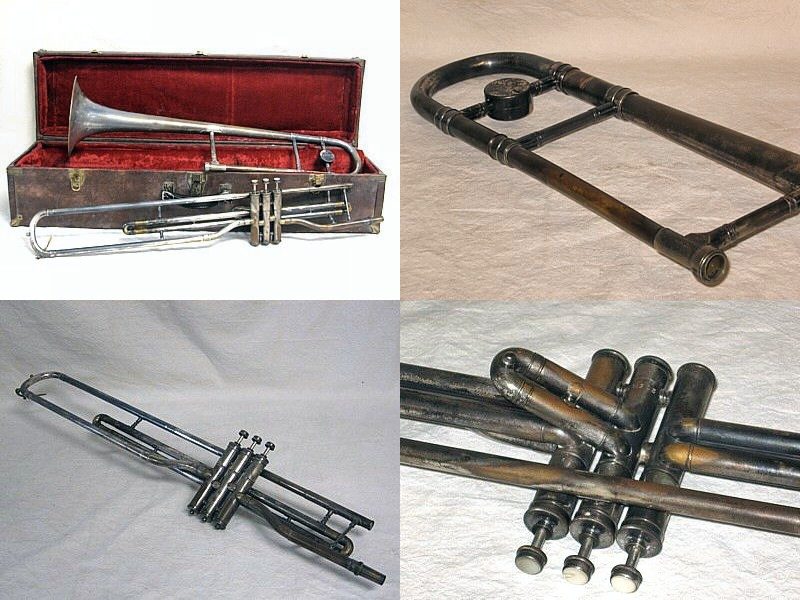
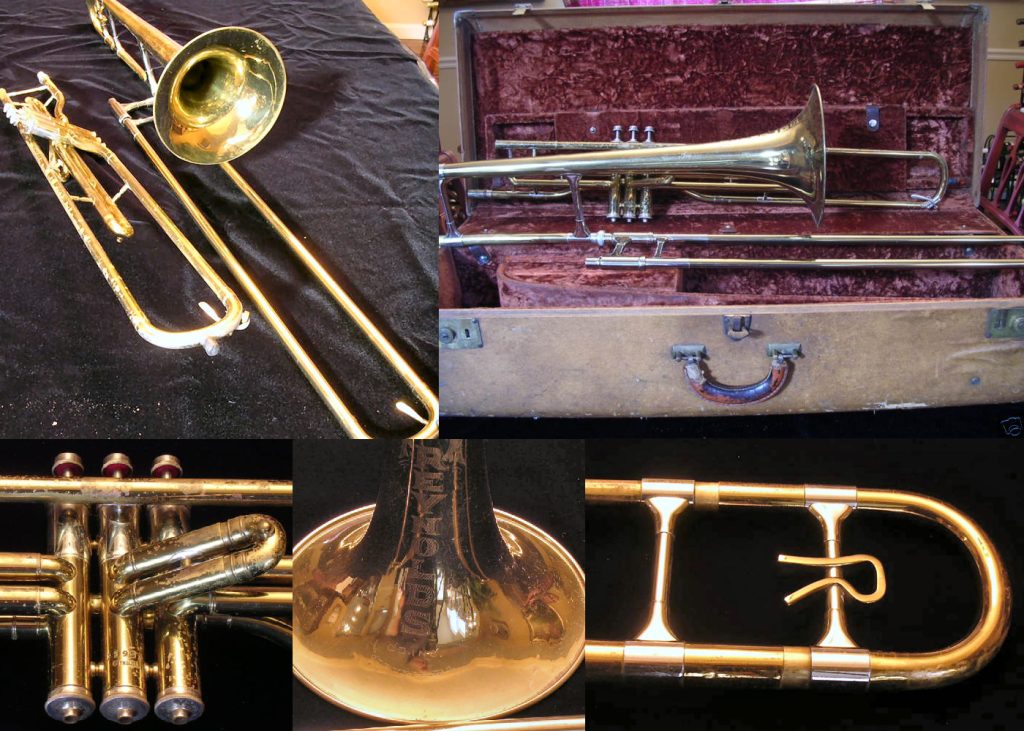
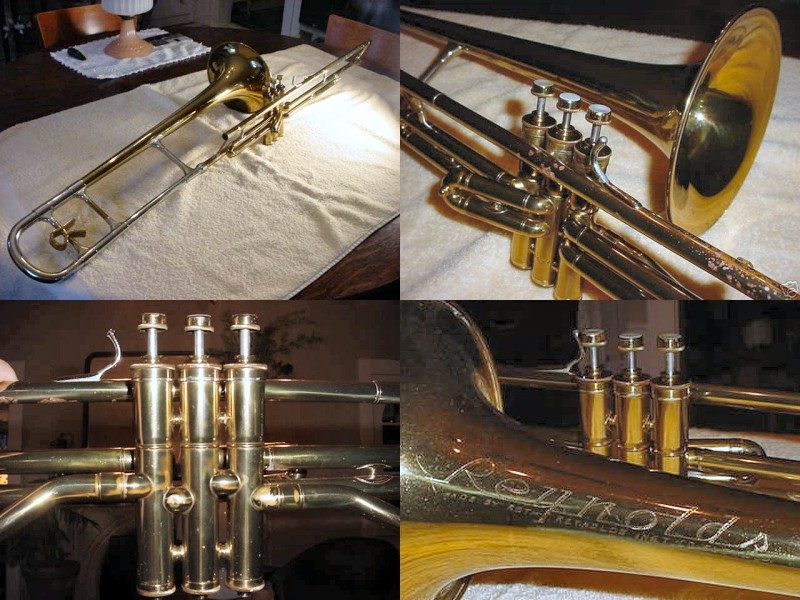
![Model 75 [SN 45627]. Photos used with permission from David Reed (eBay Member: dgreeddgreedjr).](https://contemporacorner.com/wp-content/uploads/2009/02/045627.jpg)
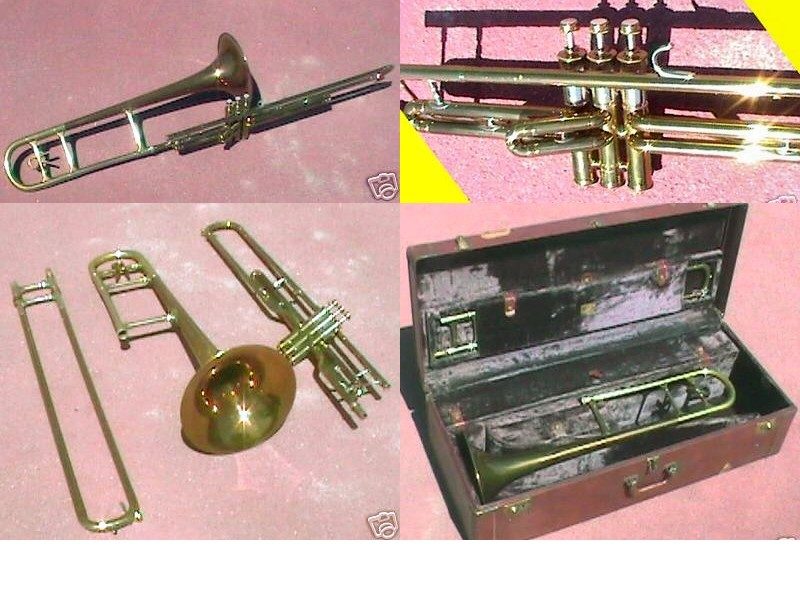
![Model 79 [SN 57472]. Photo source: eBay.](https://contemporacorner.com/wp-content/uploads/2009/02/057472.jpg)
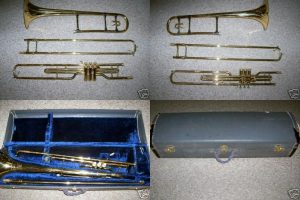
![Model TV-28 [SN 216775].](https://contemporacorner.com/wp-content/uploads/2009/02/216775.jpg)
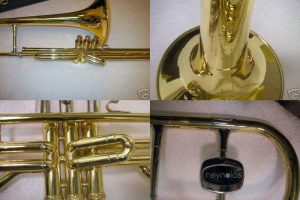
![Model TV-29 [SN A18798].](https://contemporacorner.com/wp-content/uploads/2009/02/A18798.jpg)